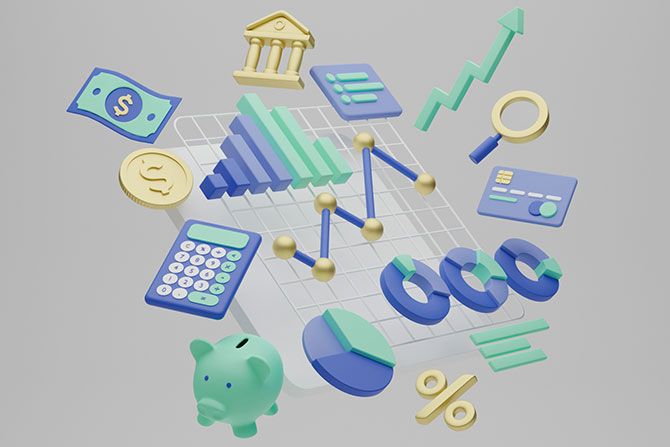As community banks struggle to compete with the industry’s largest banks, as well as an ever-increasing number of fintechs and nontraditional lenders, offering attractive deposit pricing is key. At the end of 2022, banks were competing for $18T in deposits, according to the Federal Reserve Bank of New York. While there have been multiple rate hikes by the Federal Reserve, with July’s rate hike bringing rates to a 22Y high, deposit rates among banks have been slower to increase, although that is changing. In Q4 2022, the average Fed funds rate had climbed to 3.7%, compared with interest-bearing deposit rates of only 1.4%. As of July 17, the FDIC shows deposit rates have increased significantly in 2023.
The last few years led to a widespread decrease in both deposit balances and non-deposit borrowing. Customers have also been more cognizant of where they’re putting their money. “Higher interest rates, as well as the banking crisis in March, led to an awakening of customers’ realizations of higher-yielding alternatives for deposits that may have been parked in non-interest bearing or low-yielding transaction accounts,” noted a recent bank deposit commentary from Morningstar.
The tides are slowly beginning to turn back toward profitability, however, and maintaining that momentum is key. As banks seek to hold onto existing customers and attract new ones by inching up deposit rates, it is important to do so strategically.
The Stakes
Failing to offer competitive deposit rates could further erode existing deposit bases as customers seeking higher rates route their money to other institutions. On the other hand, banks engaging in deposit rate increases need to be careful with their approach. Many of the industry’s largest banks have been offering higher rates solely to new customers and even limiting the geographic region that new account holders must reside in. This “new money only” approach can increase the risk that existing customers will feel slighted and may spur them to move their business elsewhere.
Another way that banks have dealt with deposit rate competition is by taking a passive approach, hoping that the number of customers who depart in search of higher rates is minimal. In some cases, banks wait to offer higher rates to customers in search of greener pastures only when those clients make noise about switching banks. While it would be troublesome enough for banks if it were only the largest depositors who are motivated enough to switch banks, smaller depositors are equally focused on deposit rates.
Flipping the Narrative
As the saying goes, information is power. Establishing optimal deposit pricing requires not only knowing what deposit rates your peers are offering but having a firm grasp on how rate increases will impact your overall customer relationship profitability. Simply increasing deposit rates to match those of competitors is a risky move that can result in a compressed net interest margin (NIM) as deposits become more expensive, and holding onto existing customers may not necessarily require blanket rate hikes across the board.
To determine when and where higher deposit rates make sense, community banks should employ profitability models that spell out exactly how various rate hikes could impact the profitability of specific customer relationships — both existing and new customers — and identify what the potential individual account losses would mean for their bottom line. Full customer profitability platforms allow banks to analyze and determine the value of both their comprehensive customer portfolios and their individual customer relationships. Such analysis can pinpoint which customer accounts are most profitable, how and where profits could potentially be improved and when, and whether the cost of higher deposit rates or exception pricing outweighs the loss of a customer’s accounts.
Modeling even allows banks to project the entire lifetime value of individual customer relationships. Without modeling and a customer profitability analysis tool that can provide comprehensive customer base insight, it can be extremely difficult to determine which customer relationships truly warrant exception pricing. As always, fair and reasonable deposit pricing practices need to be considered when making pricing decisions.
Holding on to existing customer deposits and attracting new ones requires competitive deposit rates, but increasing overall deposit rates is not always the best approach. Banks should employ profitability models to help identify when and where higher deposit pricing can really pay off for their institutions. Making such decisions without comprehensive information could potentially prove harmful to a bank’s profitability.
To continue this discussion or for more information, please contact Dennis Falk at pcbb.com or dfalk@pcbb.com.
Dedicated to serving the needs of community banks, PCBB’s comprehensive and robust set of solutions includes cash management, international services, lending solutions, and risk management advisory services.










